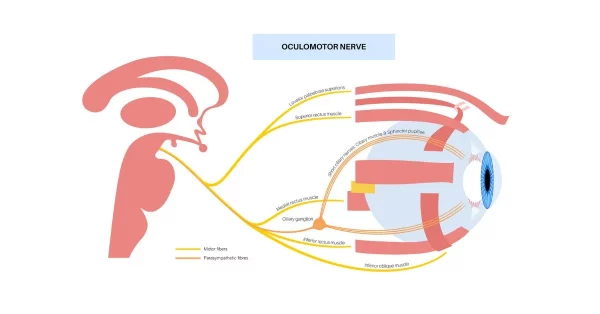Driving after brain injury can be a complex issue. The severity of the TBI and the unique secondary effects that follow will determine whether or not you can get back behind the wheel safely.
Most people that sustain a mild TBI or concussion are able to drive soon after their injury. However, those experiencing moderate to severe secondary effects may need rehabilitation before attempting to drive.
This article will discuss which signs to look for when determining if you can drive again after a brain injury. Before driving again, however, it is essential to work closely with your medical team and your local driving agencies. This will ensure not only your own safety but the safety of everyone else on the road as well.
At the end of this article, you’ll discover which rehabilitation steps you must take to improve your chances of passing a driving test and getting back behind the wheel.
You can use the links below to jump straight to any section:
- When Is It Safe to Drive Again After Brain Injury?
- Assessing Signs that a Person Should Not Drive After a Brain Injury
- How Your Doctor or Driving Instructor Assesses Your Ability to Drive After TBI
- Adapting Your Car for Driving After Head Injury
- Driving Rehabilitation Techniques
Is It Safe to Drive Again After Brain Injury?

After any brain injury, even a mild concussion, doctors recommend that you take some time off from driving. This can allow you to give your brain a chance to heal.
How long you should wait depends on the type of traumatic brain injury you experienced. According to the most common guidelines:
- If you have a mild head injury, such as a concussion, doctors recommend you wait at least 24-48 hours before driving again.
- If you suffered a more serious brain injury, especially one that required a hospital stay, doctors suggest waiting 6-12 months before attempting to drive again.
After you have waited the recommended time, you should consult your doctor, who will assess your driving fitness.
Your doctor will look for any lingering physical, visual, or cognitive problems that can impair your driving skills. There are five major challenges that your doctor will consider before allowing you to get behind the wheel after a brain injury.
1. Physical Impairments
Hemiplegia or hemiparesis, which causes paralysis or weakness on one side of the body, is one of the most common results of TBI and perhaps the biggest obstacle to driving after a brain injury. When a brain injury damages the primary motor cortex, it can cause severe weakness in your hands, arms, legs, or even trunk.
Other physical effects that can make it unsafe to drive include severe headaches, sensory problems, and dizziness. In addition, spasticity is another common effect of brain injury, and can greatly restrict movement, making it difficult to drive.
Fortunately, many of these challenges can be overcome with adaptive driving equipment and therapy. An effective rehabilitation exercise plan may help you regain muscle movement and strength and let you get back on the road sooner.
2. Visual Deficits

Many TBI survivors suffer from some sort of vision problem. Since healthy vision is necessary for driving safely again, treating any visual deficits you may have is critical.
Some of the various vision problems you might experience after a brain injury include:
- Blurred or double vision
- Problems with depth perception
- Loss of central vision
- Loss of peripheral vision
- Hemianopsia/ Visual Field Cut (loss of vision in half of the visual field)
Vision therapy and eye exercises can often treat these issues. However, you must wait until you have been cleared by a medical professional and your local driving agency (in the US, that’s the DMV) before attempting to drive again after a brain injury.
3. Cognitive Impairments
Driving a car not only requires physical strength and endurance, it also takes a significant amount of mental stamina. Cognitive skills needed to drive safely after brain injury include memory, concentration, problem-solving, multi-tasking, and organization.
Unfortunately, a brain injury can impair all these skills, which will make driving too dangerous for some TBI survivors. However, by practicing cognitive training, you can improve your cognitive abilities and get closer to driving again after TBI.
4. Post-Traumatic Fatigue

Another common effect of brain injury that could impair your driving abilities is fatigue.
Post-traumatic fatigue can make it difficult to stay focused on the road or make quick judgments. In severe cases, it may even cause you to fall asleep at the wheel.
Therefore, it is important to make sure your fatigue is under control before you start to drive after a TBI. While it may seem impossible at first, there are effective ways to overcome fatigue after brain injury.
5. Epilepsy
Seizures after a head injury can happen in 1 to 5 of every ten people who have had a TBI, depending on where the injury occurred in the brain. Some may even go on to experience multiple seizures and develop post-traumatic epilepsy.
If you only experience one seizure after your TBI, you most likely can still drive, as long as you have no other impairments and are cleared by a doctor. However, if you do develop epilepsy, it will be more difficult to get a driver’s license approved.
Assessing Signs that a Person Should Not Drive After a Brain Injury
There are some signs you can look for to get an idea of whether or not you can drive after a brain injury. These are general guidelines and you should always consult with a medical professional before attempting to drive.
It’s important to look for these signs yourself, if you are a TBI survivor. And it’s also necessary for caregivers to look out for these signs too, as brain injuries can sometimes impair a person’s self-awareness about how their abilities have changed.
As a result, some TBI survivors might not realize that they are not fit to drive anymore. Therefore, family members and caretakers should watch carefully for signs that the person is not ready to drive after brain injury.
Here are some signs that indicate when a TBI survivor should not drive:
- Needing instructions from passenger
- Easily frustrated or confused
- Drifting across lanes
- Getting lost in their own neighborhood
- Driving faster or slower than the posted speed
- Making slow or poor decisions
- Difficulty managing steering wheel or other controls within the car
If you display any of these signs, it’s imperative to avoid driving until you can get evaluated by a driving rehabilitation specialist.
How Your Doctor or Driving Instructor Assesses Your Ability to Drive After TBI

Your doctor or therapist can perform a few quick tests in the office to gauge your driving abilities. These tests include:
- Road sign recognition test. This test assesses visual comprehension and traffic knowledge.
- A compass task. These can examine visual acuity, cognitive agility, and attention skills.
- A trail making test. Trail making tests evaluate visual-motor tracking and visual scanning abilities. For example, your therapist might ask you to draw a line across the page connecting various letters and numbers.
Depending on the state you reside in, a doctor’s approval might be all you need to return to driving. But some states do require head injury patients to also pass an on-road driving test.
If you do not pass your initial test, you may be eligible to use adaptive equipment, which can help restore your ability to drive after brain injury.
Adapting Your Car for Driving After Head Injury
If you have chronic physical limitations after your brain injury, there are still ways you can return to driving. In fact, it’s possible to adapt your car in ways that can allow you to drive after a TBI.
There are a variety of tools that can help make driving accessible for those with physical complications. Some examples of car adaptations you can take advantage of include:
- Spinner wheels. These attach to your steering wheel to allow a person to engage in one-handed steering
- Left-foot accelerators. This allows patients with right side impairments to use the gas pedals
- Swivel seats. These can assist you in entering and exiting your car
In addition to these tools, there are several other ways to adapt your car to meet your needs. Talk to an occupational therapist for a full list of car adaptations that may be right for you.
Driving Rehabilitation Techniques

While adaptive equipment might help some TBI survivors get back on the road, it’s important to recognize that they are compensation strategies. Therefore, rehabilitation should be pursued to prevent overreliance on adaptive techniques.
Fortunately, the brain possesses a remarkable ability to repair itself and recover lost function through a process known as neuroplasticity. Neuroplasticity helps the brain rewire neural pathways and enables intact portions of the brain to take over functions from damaged ones.
Therefore, even if you have lost strength in your arm or leg, or you have difficulties with attention or vision, it is still possible to regain those abilities and recover the skills you need to drive.
You can activate neuroplasticity through intensive, therapeutic exercise. Some therapies that can explicitly address the abilities needed to drive again after a brain injury include:
- Vision therapy. Eye exercises can help restore visual clarity and scanning skills after a TBI. Work with a vision specialist who can diagnose your unique vision problems and recommend the best exercises.
- Cognitive exercises. Practicing certain cognitive exercises such as memory games can engage neuroplasticity and boost the mental abilities you need in order to drive.
- Foot drop exercises. Foot drop can significantly impair driving skills. Fortunately, foot drop exercises can help you overcome this issue, which will allow you to use your car gas and brake pedals again.
Finally, physical and occupational therapy exercises can help you recover motor function in your arms and legs, but it’s important to practice these exercises every day. In fact, recent research indicates that it can take nearly 400-600 repetitions to effect changes in the brain. This is often more than a patient can perform during weekly therapy sessions.
Devices such as Flint Rehab’s FitMi home therapy are helpful for patients who wish to drive again after their brain injury. FitMi engages the whole body and helps the patient accomplish 23 times more repetitions than traditional therapy. This may allow you to get back on the road sooner.
Learning to Drive Safely Again After Brain Injury
For many people, driving after brain injury represents the ultimate goal of recovery. The freedom to go where you want, when you want, is a crucial aspect of independence that everyone wishes to hold on to.
We hope this article has shown you that, with the right rehabilitation and preparation, driving again after TBI is certainly a possibility.
But it’s also important to remain realistic. Driving is a dangerous activity, and if your cognitive or physical abilities are too impaired, you can jeopardize the lives of both yourself and others.
That’s why the best way to ensure that you can safely drive again after brain injury is to consult an occupational therapist. These specialists can identify the areas where you need to improve and help you navigate the often complex driving rehabilitation process.









